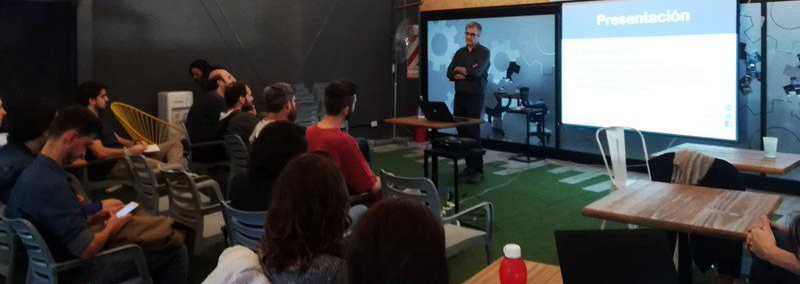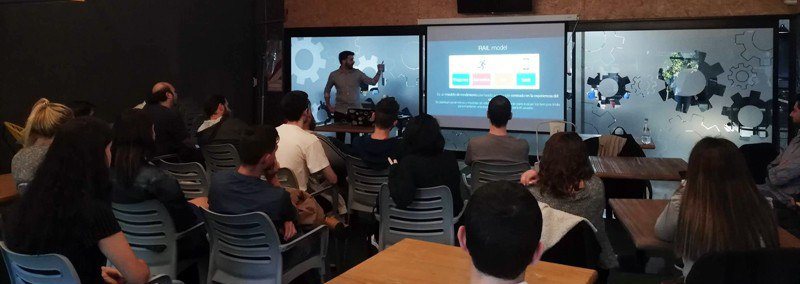All of those who had the chance to visit London and take the tube, aka subway, will remember the voice on the PAs warning users to be careful with the gap between the cart and the platform.
In software development we didn’t listen to that voice until recently: the industry never cared about the gap between the development team, the client and real users. This gap often led to epic failures, the success rate was low and users were very little engaged in the process and with the final product.
The shift to agile processes helped breach the gap between the two worlds. By putting the users over documentation, people over process, we tackled the gap and now we all Mind the Product. Today we all work as one, towards one goal, building better products.
ProductTank Rosario
MindTheProduct and specially the ProductTank initiative, is the global community that brings together professionals that are passionate about product management, to learn, share and collaborate. In the last session of the ProductTank, we had two speakers sharing their experience in the User Experience area.
One of the speakers talked about the importance of support data or access to real users to use as an input in the process of redesigning a product. This way we can determine the pain points, problematic areas, issues, validate the design and usability. The support areas have unevaluable data for the process to help in the complete redesign of the user experience and hence a better product. Retro feeding this information into the development cycle needs to become a common practice in all activities during the entire lifetime of the product. He stressed that changing the mindset is key to building better products.

The second speaker covered a different area. We often tend to underestimate the impact on the performance of design decision taken in the early stages. We usually think that having a visual component will lower the users’ anxiety and that they will wait for a page to load. But experience has proven us wrong many times. A good product is not only about the functionality and look & feel, the content needs to be readily available, so we need to think about the performance implications of a given UI component. The speaker also presented a toolset to gather information, statistics and monitor the performance. The message to take from the presentation was that there doesn’t need to be a battle between developers, UI designers and performance engineers but rather a continuous process that is not a zero-sum game (since we all win). This is a virtuous process that will enable any organization to build better products, functional, beautiful, easy to use, performant and that users will love.
As you can guess from these few lines, we really need to mind the gap, close it and work collaboratively among all teams in all aspects of the product, those known and those yet to be discovered as technology progresses making digital products more complex every day.
I’m really looking forward to the next session of the ProductTank.





